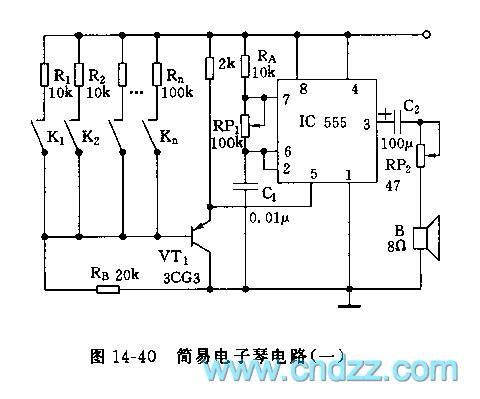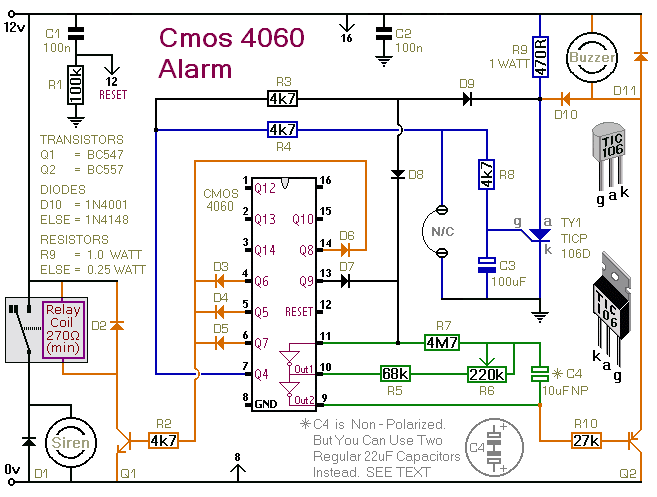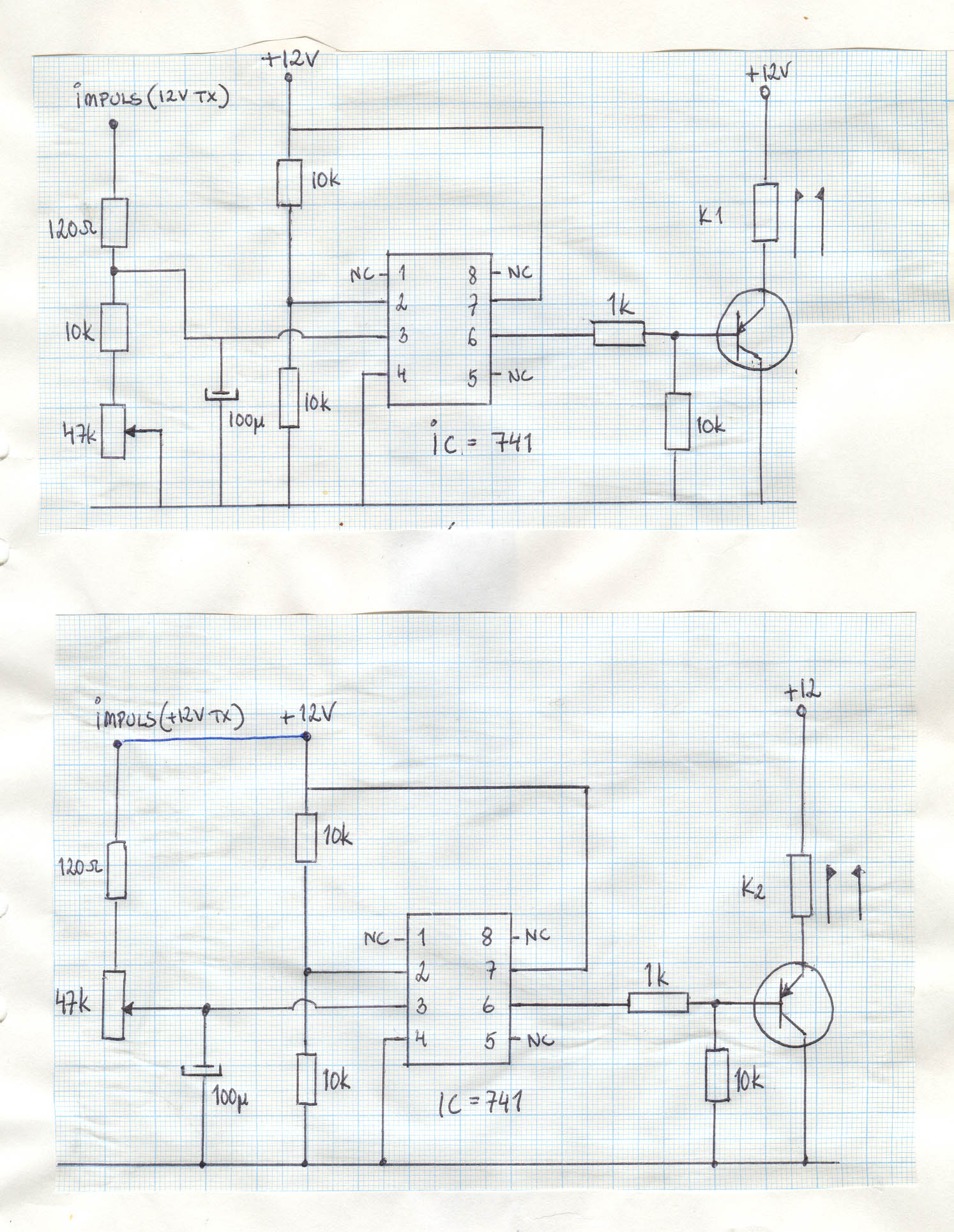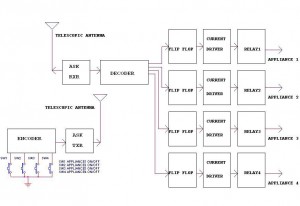
Precision Audio Generator For Musical Instrument Tune-Up Circuit
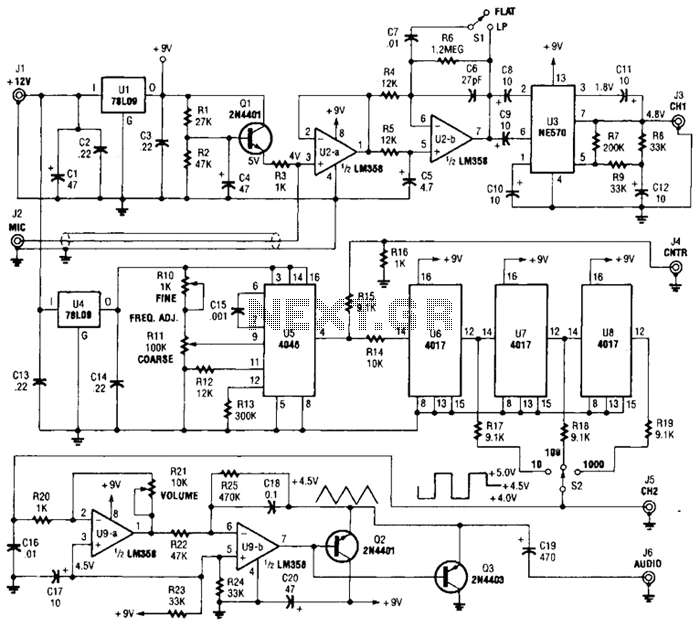
One section of the precision audio frequency generator utilizes an electret microphone element to capture audio from the piano. The captured signal is processed and transmitted to one channel of a dual-trace oscilloscope. The other section of the circuit generates a variable-frequency signal that is directed to a digital frequency counter. Following signal conditioning, the audio signal is presented to the second channel of the oscilloscope and output to a pair of stereo headphones.
The precision audio frequency generator circuit consists of two main sections: the audio input and processing section, and the frequency generation section. The audio input section features an electret microphone, which is sensitive to sound waves produced by the piano. This microphone converts acoustic energy into an electrical signal, which is then amplified and conditioned to ensure optimal signal strength and quality.
The processed audio signal is routed to a dual-trace oscilloscope, allowing for real-time visual representation of the waveform on two separate channels. Channel one displays the raw audio signal captured by the microphone, while channel two presents the conditioned audio signal, which may include modifications such as filtering or gain adjustments to enhance clarity and fidelity.
In parallel, the circuit's second section is responsible for generating a variable-frequency signal. This is achieved through the use of oscillators or frequency synthesizers, which can be adjusted to produce a range of frequencies. The output from this section is sent to a digital frequency counter, allowing for precise frequency measurement and analysis.
Additionally, the conditioned audio signal is also routed to a set of stereo headphones, enabling auditory monitoring of the piano's sound. This dual functionality of visual and auditory output makes the precision audio frequency generator a versatile tool for both analysis and performance, accommodating various applications in audio engineering and musical performance. One section of the precision audio frequency generator uses an electret microphone element to pick up audio from the piano. That signal is then processed and sent to one channel of a dual-trace oscilloscope. The other section of the circuit is used to produce a variable-frequency signal that is fed to a digital frequency counter.
After conditioning, the audio signal is presented to the second channel of the scope and output to a set of stereo headphones. 🔗 External reference
The precision audio frequency generator circuit consists of two main sections: the audio input and processing section, and the frequency generation section. The audio input section features an electret microphone, which is sensitive to sound waves produced by the piano. This microphone converts acoustic energy into an electrical signal, which is then amplified and conditioned to ensure optimal signal strength and quality.
The processed audio signal is routed to a dual-trace oscilloscope, allowing for real-time visual representation of the waveform on two separate channels. Channel one displays the raw audio signal captured by the microphone, while channel two presents the conditioned audio signal, which may include modifications such as filtering or gain adjustments to enhance clarity and fidelity.
In parallel, the circuit's second section is responsible for generating a variable-frequency signal. This is achieved through the use of oscillators or frequency synthesizers, which can be adjusted to produce a range of frequencies. The output from this section is sent to a digital frequency counter, allowing for precise frequency measurement and analysis.
Additionally, the conditioned audio signal is also routed to a set of stereo headphones, enabling auditory monitoring of the piano's sound. This dual functionality of visual and auditory output makes the precision audio frequency generator a versatile tool for both analysis and performance, accommodating various applications in audio engineering and musical performance. One section of the precision audio frequency generator uses an electret microphone element to pick up audio from the piano. That signal is then processed and sent to one channel of a dual-trace oscilloscope. The other section of the circuit is used to produce a variable-frequency signal that is fed to a digital frequency counter.
After conditioning, the audio signal is presented to the second channel of the scope and output to a set of stereo headphones. 🔗 External reference
